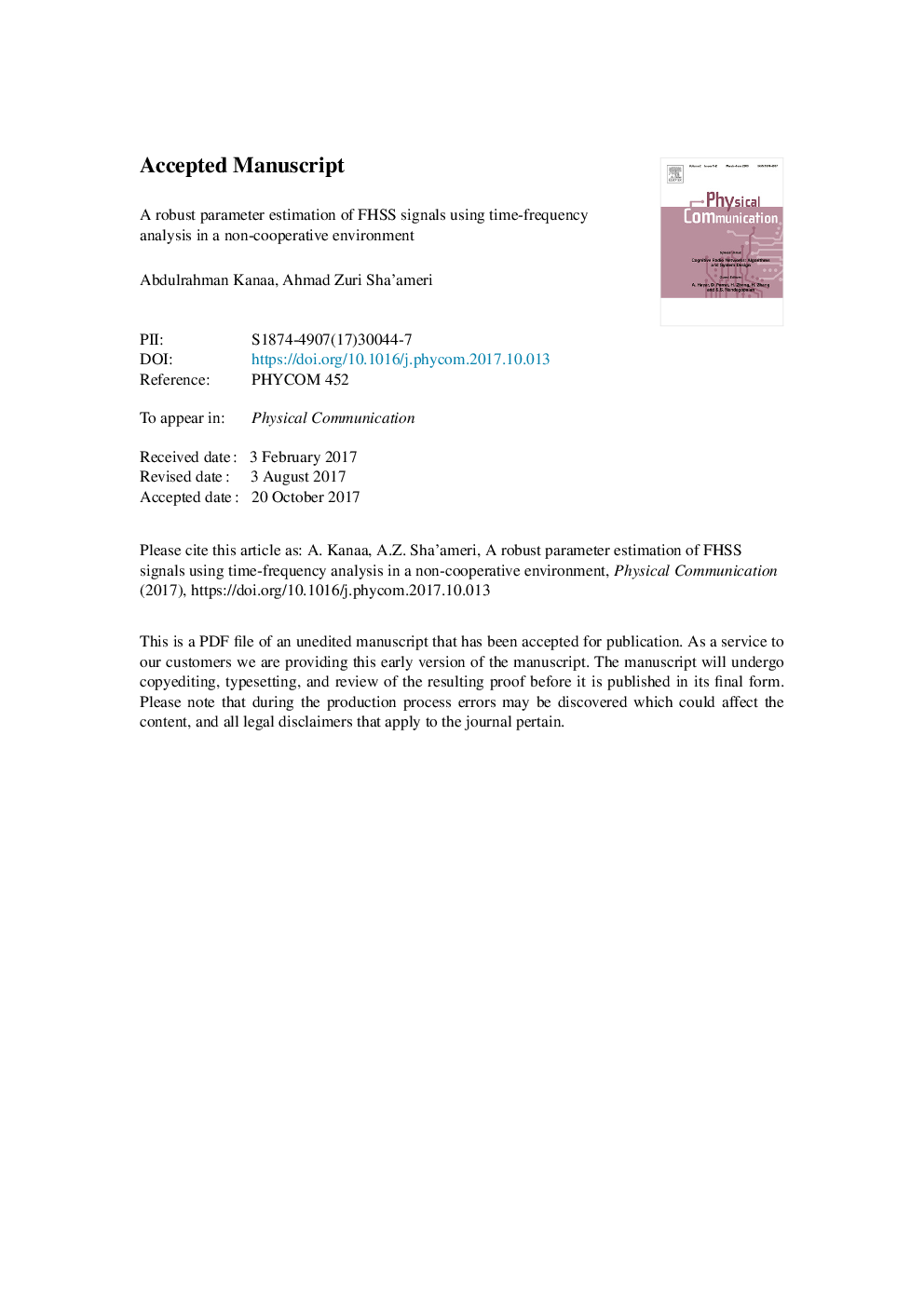| Article ID | Journal | Published Year | Pages | File Type |
|---|---|---|---|---|
| 6889150 | Physical Communication | 2018 | 33 Pages |
Abstract
Frequency hopping spread spectrum (FHSS) signals are widely implemented in both modern civilian and military applications. They are robust to channel impairments because of their low probability of interception. For applications that require the interception of FHSS signals, the signal parameters such as the hopping frequencies, hopping duration and hopping sequence should be accurately measured. In this paper, an accurate FHSS signal parameter estimation method is proposed based on quadratic time-frequency distributions (QTFDs). The extended modified B-distribution (EMBD) and the adaptive smoothed Wigner-Ville (SWWVD) are used which have the properties of high time-frequency resolution. The adaptive SWWVD requires no prior knowledge of the signal parameters since the kernel parameters are estimated from the signal characteristics and are compared to the EMBD which operates at the optimal kernel parameters. The proposed instantaneous frequency (IF) estimate method is compared to the time-frequency (TF) moments method and benchmarked with the Cramer-Rao lower bounds (CRLBs). The computational complexity of the IF estimation method is reduced by a factor of five compared to the TF moments method. Furthermore, the results show that the IF estimation method outperforms moments method where the mean-squared error (MSE) of the hopping frequencies estimate meets at minimum SNR of â3 dB and the hopping duration estimate MSE meets the CRLB at SNR of 0 dB.
Related Topics
Physical Sciences and Engineering
Computer Science
Computer Networks and Communications
Authors
Abdulrahman Kanaa, Ahmad Zuri Sha'ameri,
